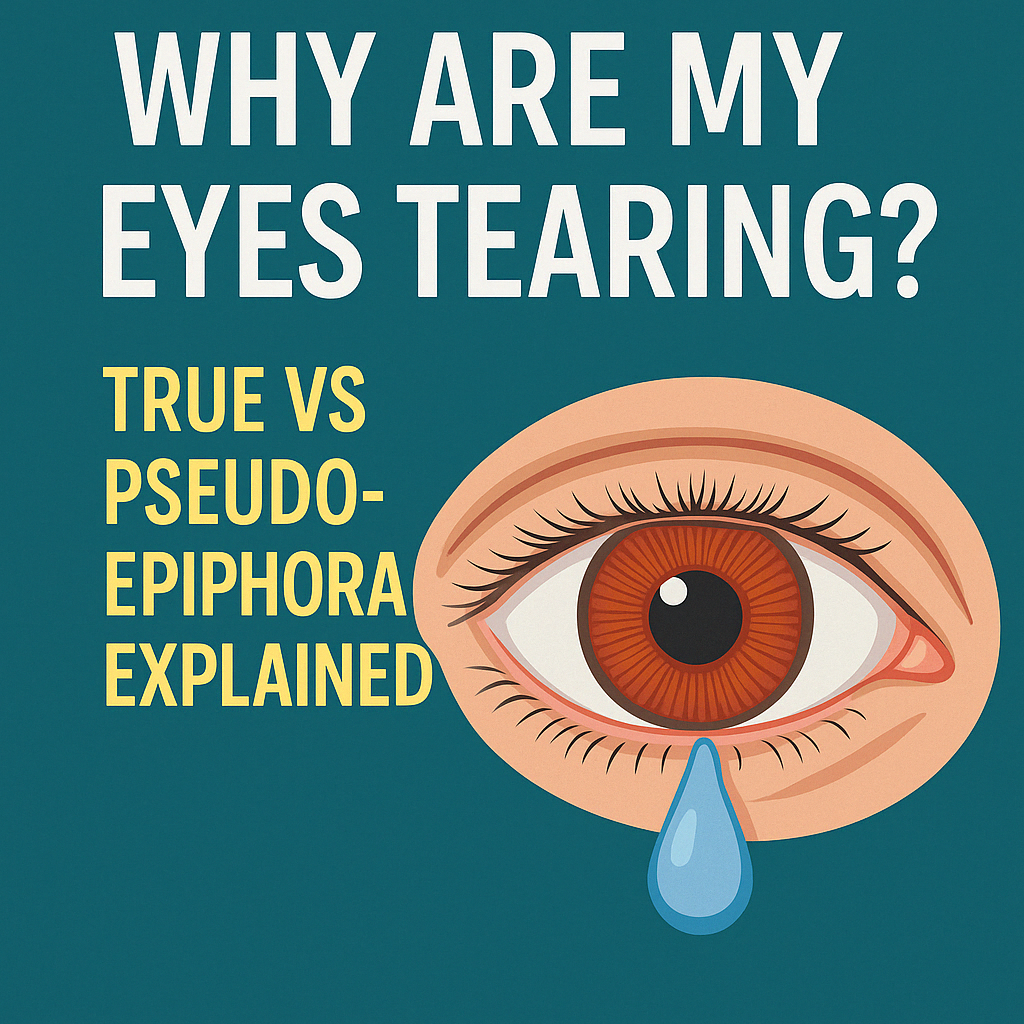Tistoryview
Disease&Treatment/Oculoplastics
True epiphora vs. pseudoepithelialization, mechanism, diagnostic methods, treatment direction
eye_doc 2025. 4. 20. 20:39👁 Tearing vs Overflow – Understanding True vs Pseudo-Epiphora
“Tearing” is one of the top 3 most common complaints in ophthalmology.
But not all tearing is the same — understanding whether the tears overflow or not is crucial to diagnosis and treatment.
✅ Key Definitions
TermMeaning
| Tearing | Accumulation of tears in the eye |
| Overflow | Tears running down the cheek |
| True Epiphora | Caused by blocked tear drainage |
| Pseudo-Epiphora | Caused by excessive tear production |


✅ True Epiphora
- Due to blocked lacrimal drainage system
- Overflow occurs because tears can’t exit properly
- System includes: Punctum → Canaliculus → Lacrimal sac → Nasolacrimal duct
🔍 Upper vs Lower Drainage Obstruction
TypeClues
| Upper (punctum, canaliculus) | Overflow only |
| Lower (sac, nasolacrimal duct) | Overflow + sticky discharge |
- Upper: Office-based procedures
- Lower: Requires surgical intervention (e.g., DCR)
✅ Pseudo-Epiphora
- Tear production increases without drainage issues
- Overflow usually does not occur
🔍 Causes
- Ocular surface irritation
- Dry eye, blepharitis, conjunctivochalasis
- Crocodile Tear Syndrome
- Misguided facial nerve regeneration
- Tears induced by chewing/thinking about food
- Intracranial causes (rare)
- Tumors or aneurysms pressing on tear pathways
✅ Treatment
- No surgery required
- Address underlying issues like dry eye or inflammation
- Manage neural causes when identified
